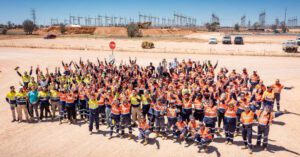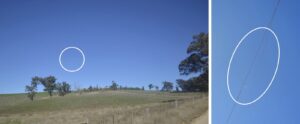The Queensland government’s two state-owned power generation businesses have recorded further write-downs, as plant failures and a continued surge in renewables investments further erode the profitability of the state’s coal plants.
The annual reports for Stanwell and CS Energy, tabled in the Queensland parliament this week, show mixed results for the two publicly owned entities and a worsening future for the state’s coal generators.
CS Energy slumped to an after-tax loss of $266.1 million for the 2020-21 financial year – almost triple the loss recorded the year prior – with the company dealing with a collapse in revenues caused by the dramatic failure of a unit at Callide C power station.
In May, an explosion at the Callide C power station caused catastrophic damage to the plant’s 405MW fourth unit, with the incident causing several other generators to go offline, triggering a temporary blackout impacting around 375,000 homes and businesses.
With the unit rendered unusable, CS Energy has written off a further $104.3 million from the book value of the Callide C plant, as well as a $19.2 million impairment to the neighbouring Callide B power station.
This is on top of impairments reported in the prior financial year of $191.7 million for Callide B and $161.7 million for Callide C, and takes the total losses flowing from the failure of the Callide C unit to around $500 million.
The damaged unit is expected to remain offline until at least February 2023, when CS Energy expects to have the destroyed unit replaced with replacement equipment.
CS Energy says it expects to recover the cost of the replacement unit through ‘Material Damage’ insurance, as well as recovering the forgone earnings while the unit is out of action through its Business Interruption insurance.
Perversely, its state-owned sibling Stanwell Corporation benefitted from the failure of the Callide C unit, with a resulting surge in Queensland wholesale electricity prices bolstering revenues for the state’s remaining generators in a year when prices had otherwise been lower than average.
“For the first nine months of the financial year, the Queensland time weighted average price was $39.89/MWh, driven by unseasonably mild temperatures and increased variable renewable generation,” Stanwell’s annual report says.
“The final quarter of the financial year averaged $127.83/MWh. The causes of this dramatic price recovery were varied and included increased planned and unplanned outages (including the Callide C4 failure and flooding at the Yallourn Power Station).”
As a result, Stanwell posted an after-tax profit of $375.4 million, more than triple the profit it had initially forecast for the 2020-21 financial year, and returning a $107.8 million dividend back to the state government.
But Stanwell said that it expects the boost to revenues to be only temporary and that it had revised down its future expected earnings, with future wholesale electricity prices expected to be lower as the market share for lower cost wind and solar generation continues to grow.
Stanwell said that it had recorded further write-downs to its coal fleet, including a $118.7 million impairment to the value of its cluster of power stations at Tarong, including the Tarong and Tarong North power stations and their associated Meandu mine.
It follows a $720 million write-down to the same group of power stations in the previous financial year.
“Greater than expected market penetration of new build renewable generation was forecast to have a negative impact upon market pricing and this assumption has driven an impairment expense,” Stanwell said.
Stanwell said that the growth of solar generation in Queensland, rooftop solar in particular, was challenging the future viability of its coal generation fleet and that it had begun a pivot into cleaner energy sources – including its involvement in a proposed green hydrogen export facility in Gladstone.
“This reduction in minimum demand is making it challenging for coal-fired plant like the Stanwell and Tarong power stations to operate in an efficient and cost-effective manner particularly during the middle of the day when solar generation peaks,” Stanwell says in its annual report.
“In response to these drivers, Stanwell has positioned itself to capture and commercialise renewable energy opportunities in the evolving commercial and industrial retail market, as well as the international hydrogen export market.”
“To do this, Stanwell will leverage the continued operation of our power stations to provide reliable electricity for Queensland and the National Electricity Market, as well as build a new diversified portfolio of renewable assets and energy storage.”
Queensland Conservation Council called on the Queensland government to use the dividends paid by Stanwell Corporation to fund further investments in renewable energy projects.
“This could be some of the last dividends Stanwell returns to the Queensland Government and should be used to ramp up the scale of investment in renewable energy, grid upgrades and new industries such as hydrogen,” Queensland Conservation Council Energy Strategist Clare Silcock said.
“Not only do these annual reports confirm the long term profitability woes of Queensland coal, they highlight the volatility caused by prolonged outages of units amid and following Callide C4 explosion.”








